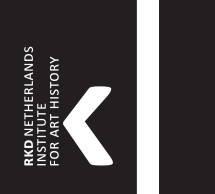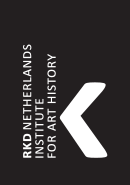7. Relationships Between Netherlandish and Polish Painting in the 17th Century
Jacek Tylicki
This article has been added to Gerson Digital : Poland in August 2014. English text by the author, edited by Brian Capstick.
When talking of influence of both parts of the Low Countries -- the Southern and the Northern Netherlands -- on Polish art, and especially painting, in the earlier modern times, we must touch on two aspects of the topic: that of imports and that of the influence of artists, their creations and ideas, on works produced on the spot. The question of imports has been discussed in several texts in Poland, notably in catalogues of museum holdings. We are to deal here with the other aspect, which seems not to have attracted the attention that it deserved. Apart from scattered information and a few minor publications devoted specifically to the subject, four principal texts exist that concentrate on different facets of the issue of the influence of foreign artists on indigenous works. The ground-breaking one is of course the appropriate chapter in Horst Gerson’s volume of 1942. In 1992, a lengthy essay in Dutch by Lucia Thijssen appeared in print which, although devoid of footnotes, is a treasure trove of information on mutual political, economic and cultural rapports between the two countries since the year 1000. This book, which since had two further Polish editions, last in 2003,1 is to some extent based on a little-known catalogue written by Thijssen and Ronald de Leeuw, accompanying an exhibition at the Maritime Museum in Gdańsk back in 1978.2 More specifically pertaining to art history are two collective volumes, containing papers from conferences: ‘Netherlandism in Polish Art’ from 19953 and ‘Netherlandism in Silesia and Neighbouring Lands’ from 2003.4
Before singling out some artistic examples for illustration of the topic under discussion, a few words must be said about the historical and cultural situation of the vast Polish-Lithuanian Commonwealth [1], stretching eastward short of Moscow. The foundations of the dual state were laid in the late 14th century and it reached its power peak between the late 15th and early 17th centuries, before falling prey to neighbours in the late 18th century. Existing on the crossroads of Byzantine and Latin cultures, the most Westernized part of this huge land and the part most eagerly engaged in maritime trade was by far the province of Royal Prussia [2], annexed to Poland in 1466 as part of the former Teutonic Knights’ state. Inhabited partly by a German population and immigrants from the Low Countries, it included Gdańsk or Danzig (in old Dutch: Danswijck), a great Hanseatic merchant city on the southern Baltic shore and an important seaport. Danzig was the most powerful of the three great autonomous Prussian cities, ruled in fact by local patricians and only formally subject to the Polish king. In the modern era, burgher and Protestant culture flourished in Danzig, and the busy commercial sea route provided for wide and intensive foreign contacts. With regard to the Low Countries, they procured a lively import of ideas and artworks, imbuing the city in time with a distinctively Netherlandish character. This process, which can be best observed in building activity, reached its peak around 1600 and is parallel to the development observed in the whole Baltic region: for instance in Copenhagen, but also in Riga.5

Cover image
Daniel Schultz
Portrait of Dedesh Aga, emissary of the Khan of Crimean Tartars to the court of King John Casimir in Warsaw, with his entourage, 1664 (dated)
Sint-Petersburg, Hermitage, inv./cat.nr. GE-8540

1

2
Notes
1 Thijssen 2003.
2 Ober/De Leeuw/Thijssen 1978.
3 Hrankowska 1995.
4 Kapustka Kozieł/Oszczanowski 2003.
5 The best account on the political and cultural history of the province is perhaps provided by Labuda 1969-2003; for Gdańsk itself, see Simson 1913–1924, and a newer essay in English: Cieślak 1995.

